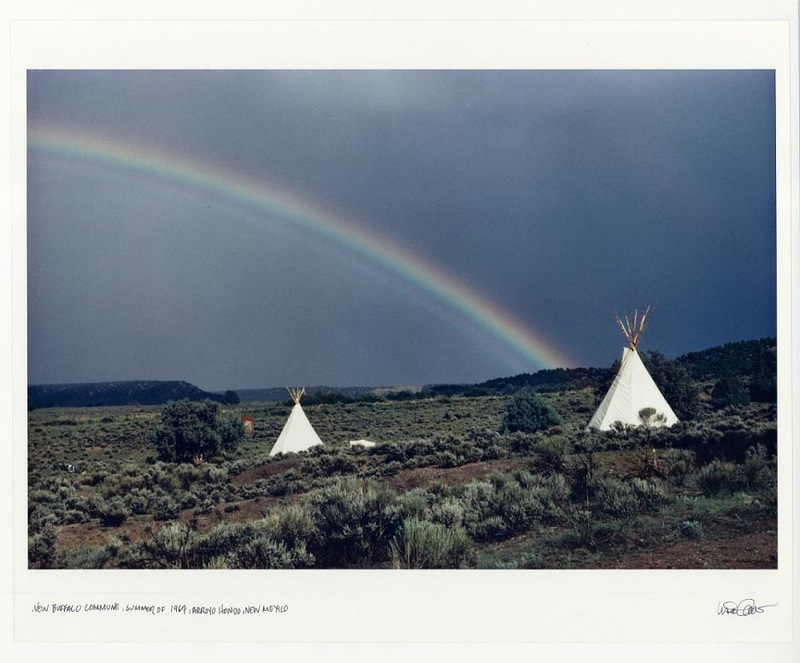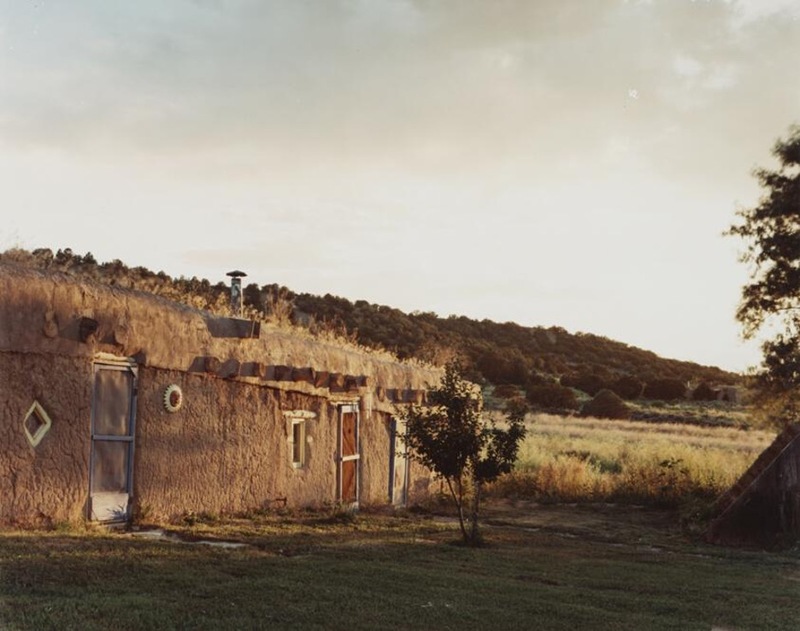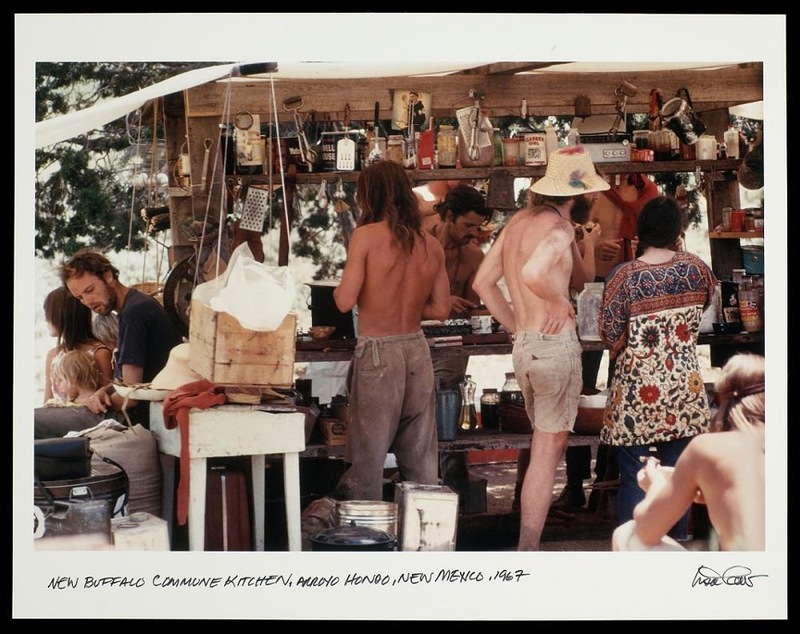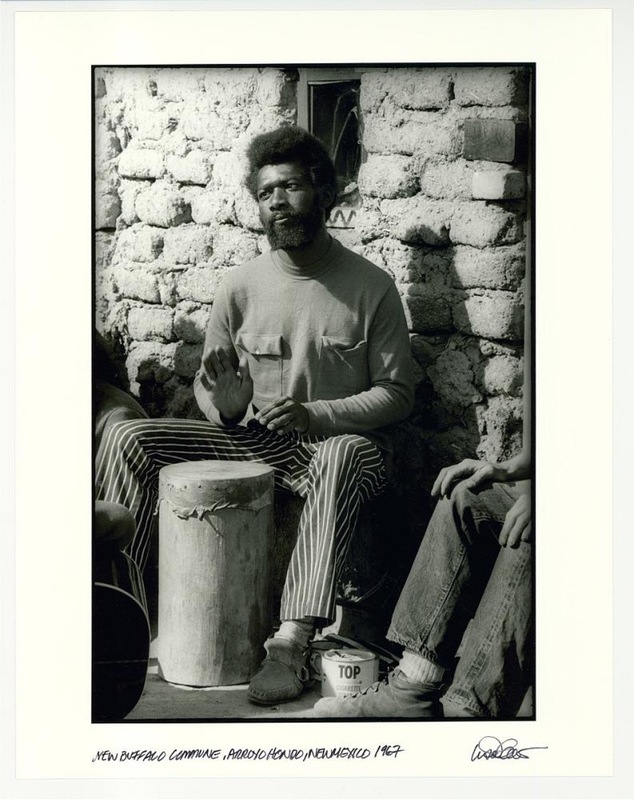
New Buffalo was a hippie commune founded in 1967 with the goal of getting back to the land and creating a self-sufficient community. It was emblematic of the Taos area commune scene, which encountered a number of environmental and cultural challenges.
During the late 1960s, the US saw an unprecedented explosion of commune formation driven by the hippie counterculture. Alienated by the mainstream conformist, consumption-oriented society, a generation of young people left their places of origin to “tune in and drop out” and “get back to the land.” New Mexico was one of the epicenters for commune development, however the reasons for this are not entirely clear. The climate is harsh and life difficult. Nevertheless, New Mexico had inexpensive land and a reputation for artistic communities around Taos and Santa Fe starting in the early 20th century.
In 1967, Rick Klein used his inheritance of $50,000 to purchase 100 acres of land in Arroyo Hondo near Taos and established New Buffalo with a group of friends. They quickly faced several challenges including the loss of their main structure to fire in 1968 and an influx of more residents than the infrastructure could handle. Membership experienced constant turnover and extreme seasonal fluctuations. The residents lived frugally; dozens of inhabitants were supported for only forty dollars per week. Aside from growing their own vegetables and grain, communards hunted their own meat and collected firewood from thirty miles away.
Following New Buffalo, as many as twenty-five communes appeared in the area around Taos and Santa Fe. This influx of new inhabitants had an impact on the local communities. The relationship with local Native Americans was complex. On one hand, some of the communes had good relations with local tribes such as the Taos Pueblo. For example, Klein named New Buffalo in honor of the significance of the buffalo for the Indians, and the members were interested in Indian architectural and sartorial practices and studied the ceremonial use of peyote under Native teachers. However, some scholars have accused the communards of “playing Indian.”
In contrast, the relationship with the local Hispanic population was much more contentious and the area around Taos became the site of the US’s most explosive conflict between local inhabitants and hippies, known locally as the “Hippie-Chicano War.” Nearby Hispanic communities resented the communards, perceiving that they came from prosperous backgrounds yet chose to live in poverty, that they flaunted social norms, that they were unhygienic, sex-crazed dope fiends, and that they might negatively affect the economically important local tourist industry. Incidents such as dynamiting, arson, and telephone threats occurred. The conflict came to a head when one nearby commune member was murdered, two others beaten, and a third raped. Soon after, the pace of commune establishment slowed and cultural conflicts became less salient.
New Buffalo came to public attention when it served as the inspiration for some commune scenes in the film Easy Rider, although shooting did not take place on the property itself. By the early 1980s, New Buffalo’s population had dwindled and Rick Klein decided to turn the property into a hippie-themed bed and breakfast referred to as the “Far Out Inn” by the LA Times. It was later purchased by a person interested in preserving the historic site.
Images




